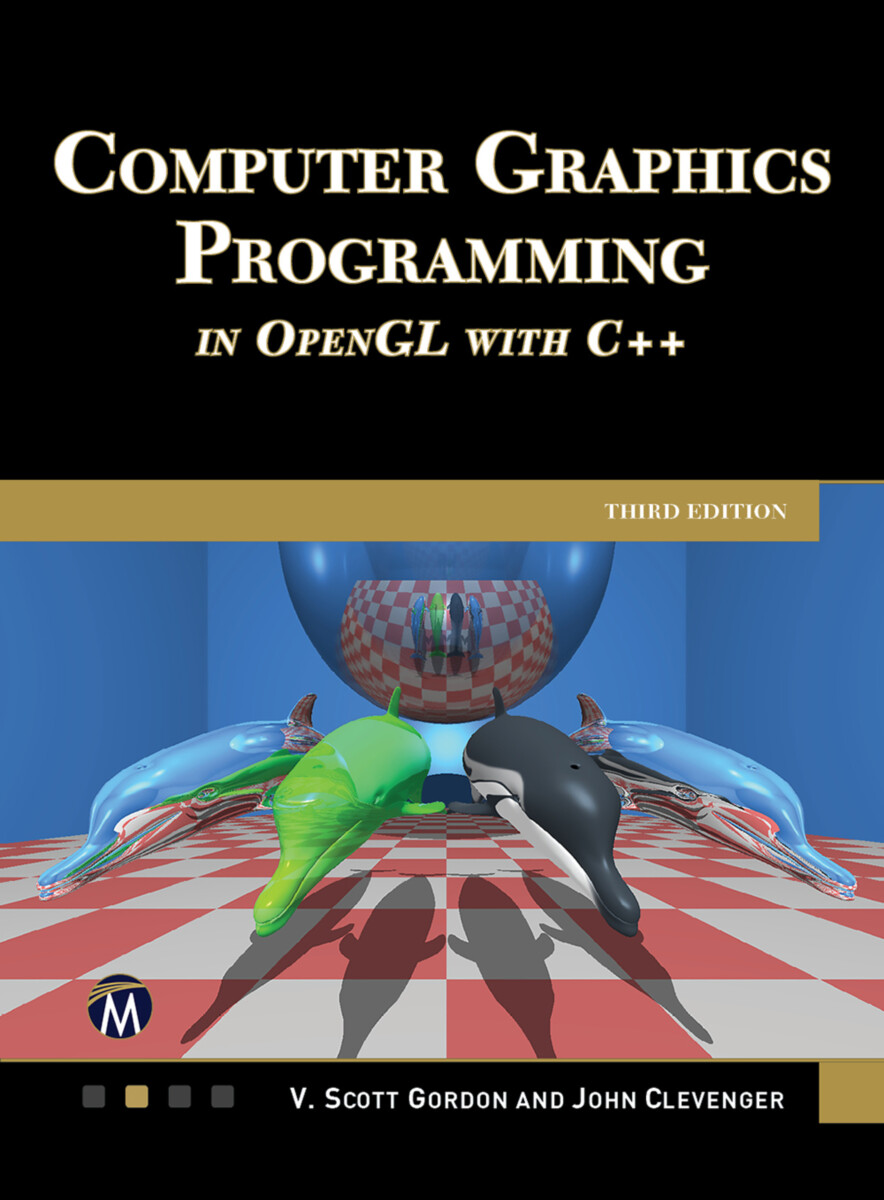Computer Graphics Programming in OpenGL With C++ Edition 3
- Publisher
Mercury Learning and Information - Published
23rd February - ISBN 9781501522598
- Language English
- Pages 568 pp.
- Size 7" x 9"
- Request Exam Copy
Library E-Books
We are signed up with aggregators who resell networkable e-book editions of our titles to academic libraries. These editions, priced at par with simultaneous hardcover editions of our titles, are not available direct from Stylus.
These aggregators offer a variety of plans to libraries, such as simultaneous access by multiple library patrons, and access to portions of titles at a fraction of list price under what is commonly referred to as a "patron-driven demand" model.
- Publisher
Mercury Learning and Information - Published
27th February - ISBN 9781501519567
- Language English
- Pages 568 pp.
- Size 7" x 9"
E-books are now distributed via VitalSource
VitalSource offer a more seamless way to access the ebook, and add some great new features including text-to-voice. You own your ebook for life, it is simply hosted on the vendor website, working much like Kindle and Nook. Click here to see more detailed information on this process.
- Publisher
Mercury Learning and Information - Published
27th February - ISBN 9781501519581
- Language English
- Pages 568 pp.
- Size 7" x 9"
- Request E-Exam Copy
This updated edition includes step-by-step instruction on modern OpenGL 4.0+ GLSL shader programming with C++, along with the theoretical foundations of 3D computer graphics. Every shader stage is explored, from the basics of modeling, textures, lighting, shadows, etc., through advanced techniques such as tessellation, noise maps, water, and stereoscopy. This new edition includes expanded coverage of camera control, refraction, and a new chapter on ray tracing with bounding volume hierarchies for complex models. The companion files include all the source code, shaders, model files, skyboxes, etc., needed to run every example in the book.
FEATURES:
- Covers modern OpenGL 4.0+ GLSL shader programming with C++, and instructions for both PC/Windows and Macintosh
- Provides complete source code for each example, fully explained along with tips for performance optimization
- Includes step-by-step instruction for using each GLSL programmable pipeline stage (vertex, tessellation, geometry, and fragment)
- Designed in a 4-color, “teach-yourself” format with numerous examples that the reader can run just as presented
- Explores practical examples for modeling, lighting, and shadows (including soft shadows), terrain, water, and 3D materials such as wood and marble
- Expanded coverage of ray tracing, to include complex models and bounding volume hierarchies
- Includes companion files with source code, shaders, OBJ models, textures, skydomes, normal maps, high resolution figures, and more
1: Getting Started
2: The OpenGL Graphics Pipeline
3: Mathematical Foundations
4: Managing 3D Graphics Data
5: Texture Mapping
6: 3D Models
7: Lighting
8: Shadows
9: Sky and Backgrounds
10: Enhancing Surface Detail
11: Parametric Surfaces
12: Tessellation
13: Geometry Shaders
14: Other Techniques
15. Simulating Water
16. Ray Tracing and Compute Shaders
17. Ray Tracing of Complex Models
18. Stereoscopy
Appendix A: Installation and Setup for Windows (PC)
Appendix B: Installation and Setup for Macintosh
Appendix C: Using the Nsight Graphics Debugger
Appendix D: Building a Simple Camera Controller
Index
V. Scott Gordon, PhD
V. Scott Gordon is a computer science professor at California State University, Sacramento.
John L. Clevenger, PhD
John L. Clevenger is a computer science professor at California State University, Sacramento.


